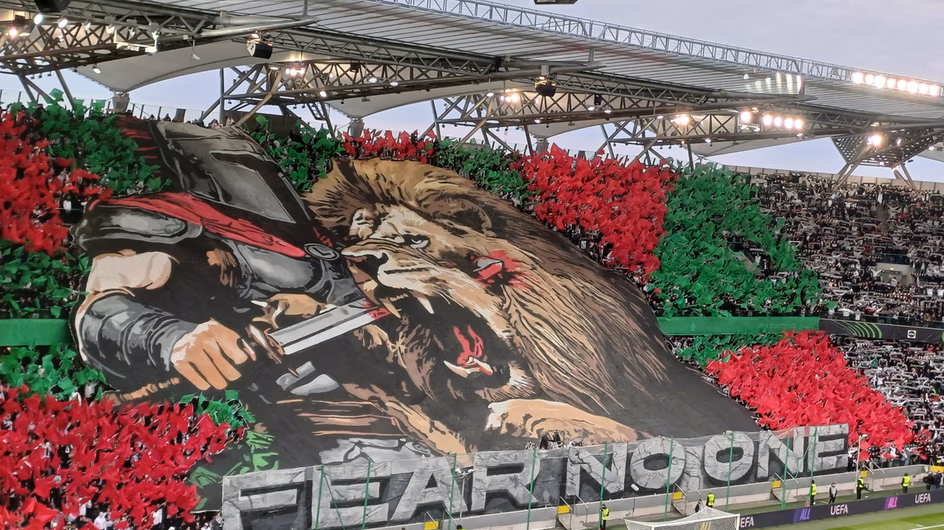
Legia Warszawa: The Heartbeat of Polish Football
Introduction: More Than a Club, a Way of Life
In the heart of Poland’s capital, where the Vistula River flows and history echoes through the streets, stands Stadion Wojska Polskiego—the fortress of Legia Warszawa, Poland’s most storied and controversial football club.
Legia isn’t just a team; it’s a cultural institution, a symbol of resistance, and a source of unshakable pride for millions. From its military roots to its modern-day dominance, Legia’s story is one of triumph, tragedy, and undying passion—a reflection of Warsaw itself.
⚽ The Birth of a Legend: Early Days (1916-1945)
Founded in 1916 as a club for soldiers of the Polish Legions fighting for independence, Legia’s identity was forged in struggle.
Originally named “Drużyna Sportowa Legia” (Sport Team Legia), it represented Poland’s fight for freedom during WWI.
Played its first official match in 1920—a 1-1 draw against rivals Polonia Warszawa.
Survived WWII, when Nazi Germany banned Polish sports clubs, only to rebuild stronger after the war.
Legia’s military roots remain central to its identity—the green army colors, the soldier crest, and the warrior spirit on the pitch.
🏆 The Golden Era: Communist Poland & Domestic Dominance (1950s-1980s)
Under communist rule, Legia became Poland’s most successful club, despite political interference.
First league title in 1955, followed by 13 more championships (a record until the 2000s).
Legendary players like Lucjan Brychczy (“Bryl”), who scored 182 goals for Legia and became a club icon.
European adventures—reaching the 1969-70 European Cup semifinals, narrowly losing to Feyenoord, the eventual champions.
But Legia’s success came with persecution. The communist regime favored army clubs, yet Legia’s fans—ordinary workers, students, and rebels—made it the people’s team.
🔥 The Dark Years: Chaos, Relegation & Redemption (1990s-2000s)
After communism fell, Legia faced financial ruin, corruption scandals, and even relegation (1996).
Fans kept the club alive, fundraising and protesting against mismanagement.
Returned to the top in 1997, beginning a new era of dominance.
1995 Polish Cup win—a rare bright spot in a turbulent decade.
Then came the 21st-century revival:
Ownership stabilized under Bogusław Leśnodorski and later Dariusz Mioduski.
Modernized stadium (2011), turning Stadion Wojska Polskiego into a European-class arena.
Returned to European competitions, facing giants like Real Madrid, Dortmund, and Chelsea.
💚 The Legia Identity: Why This Club Means Everything
1. The Ultras: “Żyleta” (The Razor)
Legia’s ultras are Poland’s most feared and passionate.
Famous tifos—like the “Welcome to Hell” display vs. Real Madrid (2016).
Political activism—protesting corruption, far-right extremism, and unfair policing.
Rivalries—ferocious derbies vs. Polonia Warszawa & Lech Poznań.
2. The Heroes: Legends Who Defined Legia
Kazimierz Deyna (1960s-70s maestro, later played for Man City).
Miroslav Radović (modern-era icon, over 100 goals).
Ivica Vrdoljak (Croatian warrior, fan favorite).
3. The European Nights
2014-15 Champions League qualifiers—beating Celtic in a controversial but epic playoff.
2016 Europa League run—beating Sporting CP at home.
2023 Conference League—shocking AZ Alkmaar with a last-minute winner.
🌍 Legia Beyond Football: Community & Controversy
The Good:
Legia Foundation—helps disabled children, war veterans, and homeless shelters.
Anti-racism campaigns—strong stance against discrimination.
Cultural symbol—songs, films, and art inspired by the club.
The Bad:
Hooliganism—fights with police and rival fans.
Corruption scandals—bribery allegations in the 2000s.
Political divisions—some ultras far-right, others anti-fascist.
Yet through it all, the fans remain loyal.
🔮 The Future: Can Legia Conquer Europe Again?
New talent emerging (like Kacper Urbański, teenage sensation).
More European campaigns—aiming for Europa League knockout stages.
Stadium expansion plans—could reach 35,000+ capacity.
💚 Final Thought: Why Legia Matters
Legia Warszawa is more than football. It’s about:
A soldier’s spirit—never surrendering.
A city’s pride—Warsaw’s beating heart.
A fan’s love—unbreakable, through highs and lows.
For Legia fans, supporting this club isn’t a choice. It’s a way of life.
🔹 What’s your favorite Legia memory? Who’s your all-time favorite player? Comment below! ⬇️ #LegiaWarszawa #CWM
